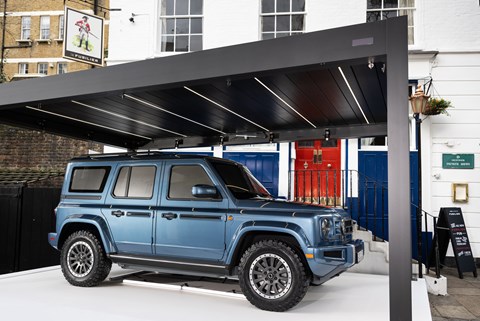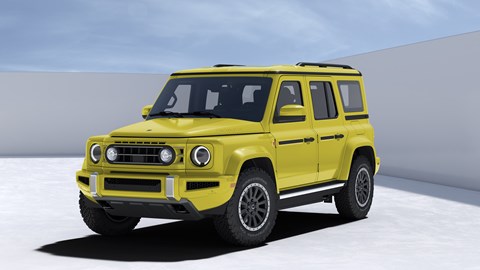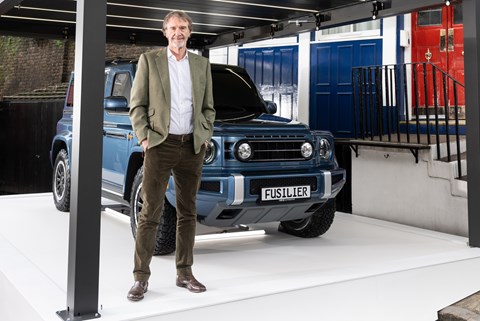► Two new 4×4 additions to the Ineos Automotive line-up
► One full electric, one a range extender
► Smaller and sleeker than the Grenadier
Busy week for Sir Jim Ratcliffe. On Monday the petrochemicals billionaire buys a big chunk of Manchester United, the football team he’s supported since he was a boy. On Friday he returns to the pub in London’s swanky Belgravia where he conceived the plan for Ineos Automotive that’s already given us the Grenadier 4×4 and the Quartermaster pick-up truck to announce two electrified stablemates.
Both called Fusilier, one is a full-electric off-roader, the other a range-extender version. Like the Grenadier, they were developed in partnership with Austrian firm Magna, which creates the G-Class with Mercedes. Unlike the Grenadier, which is built at a former Mercedes factory in Hambach, France, the Fusilier will be built by Magna in Graz, Austria.

Ineos chairman Sir Jim says: ‘The two powertrain options provide a real-world reduction in carbon emissions without compromise to the off-road capability or the on-road performance. We’re excited to bring our electric 4×4 to market but we are beginning to understand the clear limitations of battery-electric in certain situations. We believe the addition of a range-extender electric to our line-up will offer our customers a very low-emission drive without the range anxiety drivers of electric vehicles experience today.’
Expect it to be available in 2026 or possibly 2027 in some markets, including the UK. It will be heavier than the Grenadier, as well as lower and shorter. It’s shown here in colours not yet confirmed for the production car. No price has been confirmed, but it’s likely to be more than the Grenaider. The range extender has a battery around 70% the size of the BEV’s, and may cost less.
Ineos is lobbying the British government to have the range extender categorised as an EV, rather than a hybrid; as things stand, it will be banned in 2035.

Design chief Toby Ecuyer – the man behind the look of the Grenadier – says of the Fusilier:
‘Ineos Automotive’s core values have informed the design from the beginning: practical, no nonsense and solid off-road performance. The Fusilier stands with an assured posture and meaningful attitude – aerodynamically tuned to maximise efficiency without compromising its purpose. Softer lines, a curved, raked windscreen and underbody profiling, it is defiant of the homogenous norm, but stands approachable, adventurous and understood.’
Most of the changes from the Grenadier are in search of slicker aerodynamics, to aid battery range. Corners are smoothed off, the grille has active shutters, the glazing is more flush, as are the wheelarches and skid plates.
Whereas the Grenadier has a ladder-frame chassis, the Fusilier uses a bespoke skateboard arrangement: a flat chassis with the battery built in, and a steel and aluminium body on top.
The range extender involves a ‘small’ petrol engine; more details are expected later this year. The battery cells will be from Korea.

For now Ratcliffe (above) says this: ‘As we developed this vehicle, we quickly concluded that in order to move towards decarbonisation but continue making cars that consumers want to drive, we need a mix of powertrain technologies. BEVs are perfect for certain uses: shorter trips and urban deliveries, but industry and governments need to have realistic expectations around other technologies that can help accelerate the necessary pace of change. That is the reason we are offering an additional powertrain for the Fusilier, one that dramatically reduces emissions but has the range and refuelling capabilities needed.’
And what of the hydrogen-fuelled electric Grenadier shown in prototype form last year? Still ready for production, says Ineos, but only if and when the infrastructure is in place to make it viable.
Ineos is looking into locally producing some cars in China and the US, and will later this decade add a fourth model – unconfirmed, but likely to be a bigger, plusher, footballer-friendly Grenadier.